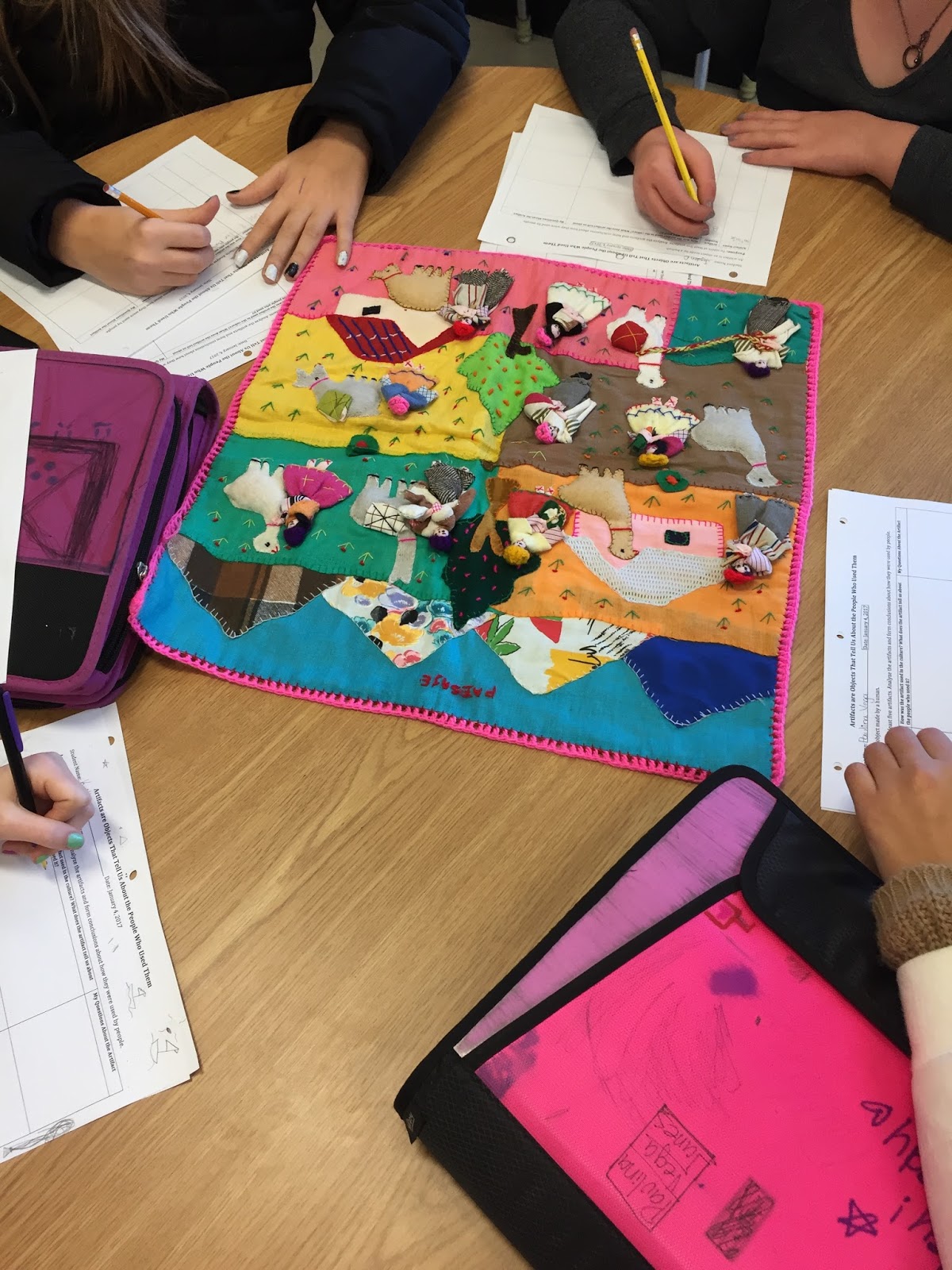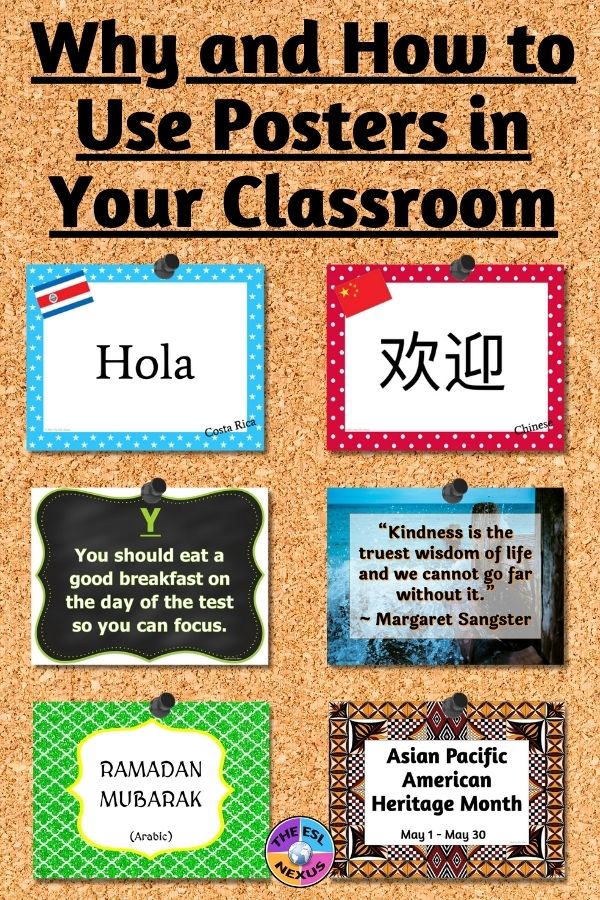This month, we’re returning to North America for the next post in this series. An earlier post discussed the education system in the Francophone province of Quebec, in eastern Canada — as I’m sure you already know, Canada is a bilingual country — so now it’s time to find out about education in another part of the country.
 |
| Map of Canada; source: The CIA World Factbook |
To help with that, I am very pleased to present Diane, from TpT store One Teacher’s Adventures. Diane is a teacher in British Columbia, a predominantly English-speaking province on the west coast of Canada. In her own words:
Structure of Schools in British Columbia
I am not familiar with how education is provided in other provinces, but in British Columbia, there are public and private schools. I work in the public system, in a middle school (Grades 6-8) with 540 students. I have taught many different subjects from Grade 1 — Grade 11. This year, I have a split Grade 7/8 homeroom class and I work with a partner teacher who also has a Grade 7/8 split homeroom. I teach English, Social Studies, French, and Advisory, and my partner teaches Math, Science, Career Education, and Physical Education to both classes. Students are typically 12-13 years old in Grades 7 and 8.
 |
| Victoria, British Columbia; source: Pixabay |
Every public school teacher in British Columbia belongs to the BCTF (BC Teacher’s Federation) and must hold a B. Ed (Bachelor’s of Education). Supply teachers (substitute teachers) are referred to as TTOCs (Teachers Teaching on Call) and are fully qualified and certified with a B.Ed degree. Most teachers in private schools also hold B.Ed degrees, but some schools don’t require it.
The School Calendar
The school year begins on the Tuesday after Labour Day in September and ends on the Thursday of the last full week in June. The winter break is typically 2 weeks at the end of December, with students returning on the Monday after New Year’s Day. Spring Break is typically 1-2 weeks in March (different districts have different lengths).
There is no school on Thanksgiving (Second Monday in October), Remembrance Day (Nov. 11), Family Day (first Monday in February), Good Friday, Easter Monday, or Victoria Day (3rd Monday in May). There are also 4-5 Teacher Professional Development Days (Pro-D Days) throughout the year on which students don’t attend school.
Students typically begin Kindergarten at 5, though some start at 4 if their birthday is between September and December and will turn 5 before the end of the year they begin. By the time students graduate at the end of Grade 12, they are usually 17 or 18 years old.
Every school district is a little different with grade configurations, grading, and scheduling. In my district, we have elementary schools (K-5), middle schools (6-8), and secondary schools (9-12). The elementary school day is typically 8:30-2:30, middle is 8:45-3:00, and secondary is 9:00-3:30.
 |
| Diane’s grading scheme for her class; source: One Teacher’s Adventures |
There are three formal reporting terms in my district, with report cards coming home in early December, March, and June. Elementary students are not assigned letter grades. Teachers use language such as “Not Meeting Expectations,” “Minimally Meeting Expectations,” “Fully Meeting Expectations,” and “Exceeding Expectations.” Beginning in Grade 6, students are assigned letter grades for each course. Students can receive the following grades: A, B, C+, C, C-, I (Incomplete), and F.
Curriculum
There are Provincial PLOs (Prescribed Learning Outcomes) that have to be taught in BC. The curriculum for all grades and all subjects has been revised over the past few years. The K-9 Curriculum is published and elementary and middle school teachers are using this new curriculum this year. The Grade 10-12 curriculum is in draft form at the moment. Secondary teachers are allowed to use a blend of the old and new to create their classes until it is finalized.
There used to be more PLOs that were very specific for each subject. The new curriculum deals more with big ideas and core competencies. The core competencies are Critical Thinking, Creative Thinking, Communication, Positive Personal and Cultural Identity, Personal Awareness and Responsibility, and Social Responsibility. The core competencies are reinforced in every grade from K-12. The revised curriculum also puts more emphasis on learning processes, rather than on content knowledge. There is a push for inquiry-based and project-based learning as well. The big ideas are overarching, giving teachers a lot more freedom to teach in a way that their individual students will be able to understand and connect with. To see the curriculum for each subject, click here.
To get an idea of what the curriculum looks like in action, check out my No Prep! Early Explorers to Canada -Cabot, Cartier, Frobisher, Champlain, Hudson resource. It addresses key questions from the Grade 4 Social Studies curriculum that ask, “What motivated explorers and settlers to come to Canada?” and “How did the geography of Canada affect European exploration?”
 |
| Find out more about this resource HERE; source: One Teacher’s Adventures |
Teacher Qualifications and Becoming an ESL Teacher
Every public school teacher in British Columbia belongs to the BCTF (BC Teacher’s Federation) and must hold a Bachelor’s of Education degree. Supply teachers (substitute teachers) are referred to as TTOCs (Teachers Teaching on Call) and are fully qualified and certified with a B.Ed degree. Most teachers in private schools also hold B.Ed degrees, but some schools don’t require it.
To specialize in Elementary Education, teachers can take a 4- or 5-year University program (teachers who take the 5-year program start at a higher salary than those opting for the 4-year). Teachers take courses in all core subjects: Writing, Reading, Math, Science, Social Studies, Art, Music, Drama, Physical Education, and French.
 |
| Grade 8 Social Studies activity; source: One Teacher’s Adventures |
To specialize in Secondary Education, teachers typically take a 4-year Bachelor of Arts or Bachelor of Science degree in the area they want to teach (English, History, Math, etc.), then take a 1-year Post-Degree B.Ed program. I took the 5-year Elementary B.Ed program, but I have taught at the middle and high school level because I have University coursework in the subjects I taught.
There are ESL (English as a Second Language) courses in most B.Ed programs. When I was at University, we had the choice to take the ESL or FSL (French as a Second Language) course. To become an ESD teacher (English Skills Development), the ESL course must be taken.
Teaching and Learning English
English is a core subject for all students in K-12. In the elementary years, English Language Arts is taught daily, focusing on Oral Communication, Reading, and Writing.
Most middle and secondary schools have rotating schedules: Students take 8 courses, but there are only 5 blocks per day, so they don’t receive English every day. It is still divided among Oral Communication (speaking and listening), Reading, and Writing, but more focus is given to Reading and Writing. English 12, or First Peoples English 12, is the only course that is required for graduation.
As long as students have the required credits to graduate, they have a choice in their other academic courses in grade 12. First Peoples English 12 follows the same PLOs (Prescribed Learning Outcomes) from the Ministry of Education as English 12, but the texts used are from Aboriginal Canadian authors and storytellers.
ELL (English Language Learners) students learn English in an immersion setting with native English speakers in these ELA classes. There are Itinerant ESD (English Skills Development) teachers in the district that work with many schools. They help classroom teachers to plan lessons with strategies for ELL students, and offer pull out support for ELL students. One resource they may find helpful is my free Symbols of Canada booklet for primary students, which helps ELLs learn about Canada.
 |
| Download your FREE copy HERE; source: One Teacher’s Adventures |
Unfortunately, there is not enough funding to have dedicated ESD teachers every day at every school. Typically, each ESD teacher has 4 or 5 schools they work with, meaning they can only visit each school once per week. There are also Literacy Support teachers who work with struggling students, whether they are native English speakers or ELL students.
We are encouraged at my school to use the nature that surrounds us in our lessons. For example, I did a lesson for descriptive writing practice. Students were asked to find a leaf outside and describe it with as much detail as possible. The leaves were then all put onto the same table and the students had to find their partner’s leaf based on the description. Below is what one of my ELL students wrote.
 |
| Grade 8 student’s work; source: One Teacher’s Adventures |
Standardized Testing
Students in Grades 4 and 7 write Foundation Skills Assessment tests (FSA tests). They test numeracy, reading, and writing skills. The FSA tests typically take 3-5 hours to complete and are sent away to be graded at the provincial level (classroom teachers do not mark them).
These tests are very controversial in BC. Many teachers see it as a waste of time as it takes time out of the regular school day and the grades are not used for school-based assessment (they don’t count toward report card grades). The results are also published to rank schools. The local teacher’s unions of many districts (including mine) send home information to parents to ask them to opt their children out of the FSA tests altogether. In my district, very few students actually write the test. This year in my class, I had only 1 out of my 12 grade 7s write the FSA.
In high school, there will be two provincial exams, one for numeracy and one for literacy. As the high school curriculum has not yet been finalized, we don’t know exactly what these will look like yet, or how it will fit into the graduation program.
Final Thoughts
I love being a teacher! I feel especially fortunate at my school as the teaching staff is very collaborative in nature. As a classroom teacher, I am able to work with Literacy Support teachers, Aboriginal Education teachers, ESD teachers, and other specialists to give my students the best environment in which to learn. I can also use my interests and my students’ interests to create lessons and learning experiences that they will connect with and that will allow them to think critically.
 |
| Canadian flag; source: The CIA World Factbook |
Thank you very much, Diane, for your detailed explanation of the education system in British Columbia. What I find most interesting are the PLOs – the Prescribed Learning Outcomes – because although they are standards, they do not describe specific learning objectives tied to content topics, like the standards I am familiar with. Rather, they describe overarching concepts, the Big Idea if you will, which is coming at the content in a very different way from what I’m used to. And that’s why I so enjoy learning about the education systems in other countries!
You can read more about Diane’s teaching on her blog, One Teacher’s Adventures. And don’t forget to check out her TpT store, too, for some more great resources!
You can find more posts in this series by clicking on these links to read about education in: New Zealand, Australia, Morocco, Sweden, England, United Arab Emirates, Scotland, Quebec (Canada), and South Africa.
April 3, 2017




